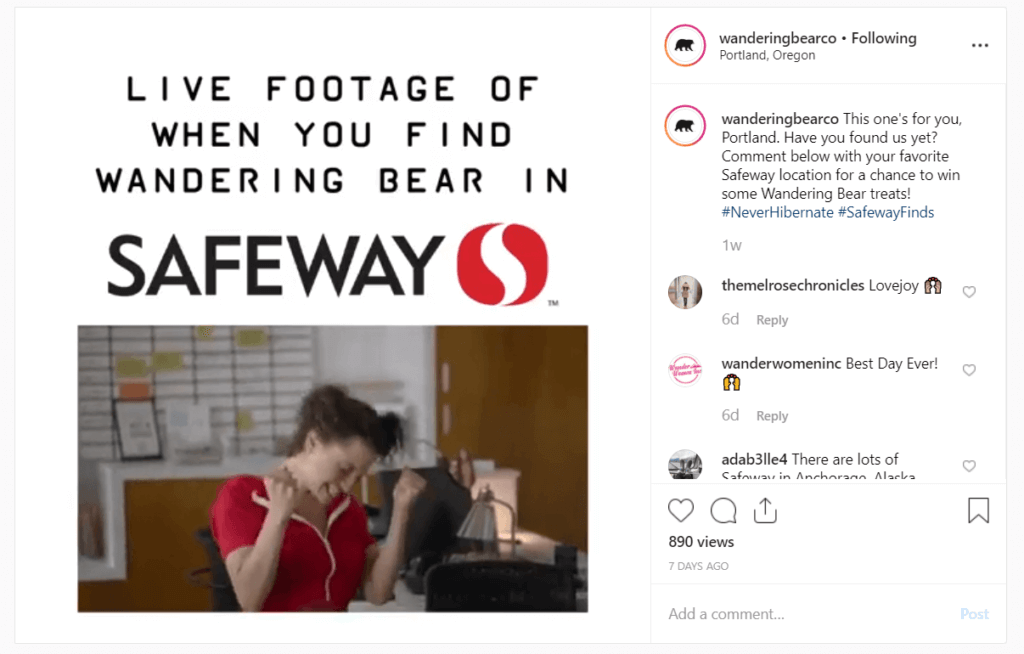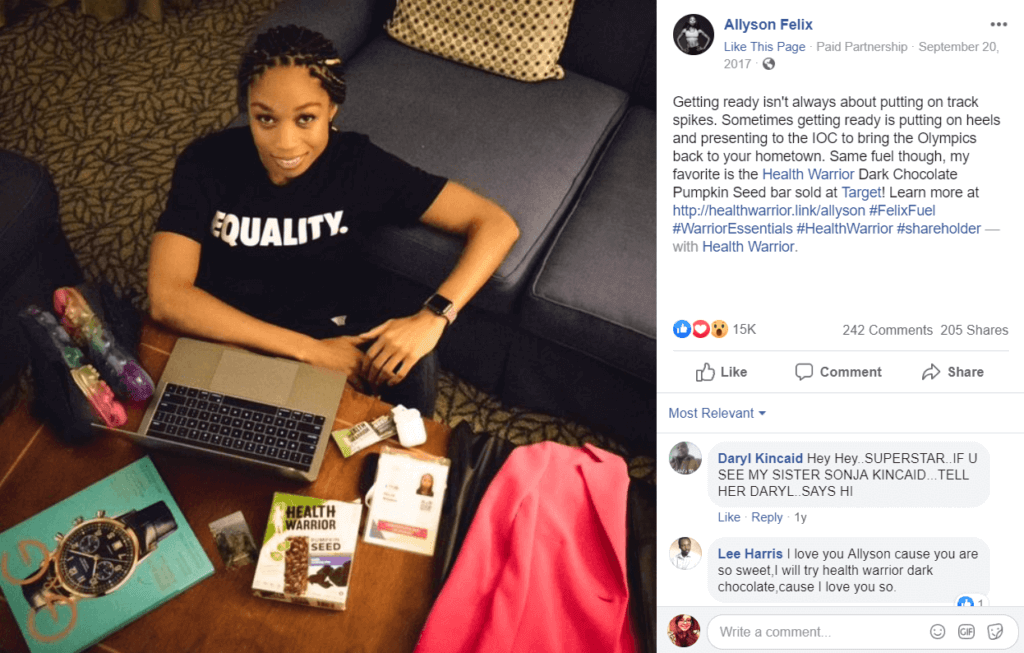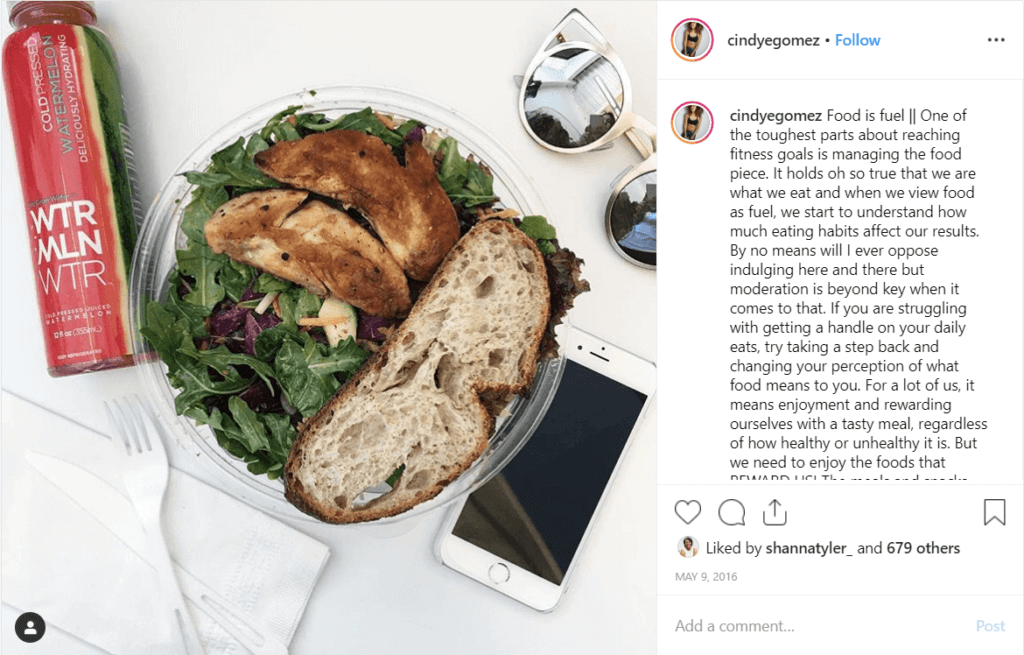Retail sales have been having a tough go of it recently. Mega brands like Sears, Toys ‘R Us and Macy’s are closing up shop(s) due to an increase in online shopping – largely led by industry giant, Amazon. Today’s consumer can order everything from waterbeds (somebody’s still into those, right?) to bottled water in a few clicks, without having to leave the couch. While this can be a concerning change for brands and retailers alike, we find the media’s adopted term of “retail apocalypse” to be a tad dramatic. Instead of worrying about department store zombies, let’s focus on how brands can embrace and reap the benefits of this change in consumer behavior, specifically consumer packaged goods (or CPGs) in the food and beverage industry.
Shopping in-store? Ain’t nobody got time for that.
Less Talky, More Shoppy
The need for retail locations is certainly lacking. A physical space in which to shop is now more of an experience than a necessity, and to some it’s just plain inconvenient compared to the ease of online. Younger generations that have grown up with the internet expect the ability to have all their needs met through their smartphone and any opportunity to avoid real-life human interaction is a bonus.
You ‘spect me to talk to somebody?
Apart from the freedom from forced social interaction, shopping online offers many enticing features that in-store simply cannot. Reviews, informative videos, flash sales, social sharing, the ability to connect (virtually) with the brand itself, and more are found with a quick scroll. Additionally, innovation in the online space just. won’t. quit. Not only can you search for and find just about any product imaginable, you can test it out through augmented reality, zip through an abbreviated check-out, ship it to your door in 2-days, 1-day or even within the hour by a nifty little drone, then! To top it all off, set up an easy breezy subscription so you don’t have to lift a finger when it’s time to re-order. At this rate, why would consumers ever leave the cozy warmth of their newly delivered down comforter?
All of these tech advances for eCommerce have certainly taken a toll on retail spaces. In 2018, CityLab found that retail location closures by square foot surpassed the amount of closures during the peak of the Great Recession. The Department of Commerce reported that online sales of general merchandise surpassed retail for the first time in February 2019. Looks like the tables are officially turning.
Or are they?
Stop. (Collaborate and Listen)
Retail is back with a brand new edition.
According to Google, roughly 80% of consumers still go in-store for immediate wants and needs. Amazon, the leader of this online retail take over, is investing in brick and mortar by opening physical Amazon Go convenience stores and recently acquiring grocery giant, Whole Foods. Think about that… if retail was losing that badly, why would the captain of the other team invest in it?
Let’s take a closer look at those previous negative stats. In a new light, the doom and gloom of the “apocalypse” rhetoric doesn’t quite hold up. In the CityLab study, the amount of closures were calculated by squarefoot, not number of locations. When you factor in that national multi-level mega stores like Sears, JC Penny and Macy’s are included in that number, it’s no wonder the collective total is scary! Additionally, the Great Recession hit small businesses harder than the big guys. Think about your favorite locally owned store…it’s probably smaller than your house.
Next, let’s re-read that second statistic from the Department of Commerce: Online sales of general merchandise surpassed retail for the first time in February 2019. Note: the first time. People, the .com boom was a long time ago. Online shopping has been around for some consumers’ entire lives. The fact that online sales for general merchandise just this year surpassed in-store is actually good news. The rise of online shopping is inevitable, and certainly a threat to stagnant retailers, but it’s been a slow moving transition which means brick and mortars aren’t dying any time soon (read: ever), and in the meantime, there’s plenty of time for some industry evolution.
We must also note that this downtrend isn’t limited to general merchandise retailers and that the internet isn’t the only culprit. Grocery stores, though much more necessity-based, are also taking a hit. Southeastern Grocers (operator of Bi-Lo and Winn-Dixie supermarkets) filed for bankruptcy and closed close to 100 stores in 2018. Once again, younger generations are making it tough on the market by favoring smaller specialty stores, farmers markets and delivery subscription services to fulfill their grocery needs. With buzz words like “farm to table,” “locally-owned” and no-added-nothings taking over the food industry, Millennials and Generation Z consumers have become increasingly picky about their CPG products, drawing them out of the aisles in search of other options.
Dar-#Winning: Survival of the Fittest
The big question now is, as a brand or retailer, how do evolve so you don’t go extinct? Answer: You have to have a strategy that hits them from all sides and uses factors affecting consumer behavior to maximize efforts. In a nutshell, you need to focus on creative omnichannel marketing.
Come again?
Omnichannel marketing is a relatively new, but necessary approach to marketing that translates to reaching consumers at all possible touchpoints with a single, cohesive brand strategy. This means, your social media posts, email outreach, in-store experience, et cetera, should all interconnect, share the same messaging, and drive the same goals-ultimately leading the consumer from discovery to purchase (and beyond) with ease. To learn the nitty gritty of an omnichannel approach, check out our write up on that topic here.

You likely have pieces of an omnichannel strategy already in place, but you’ll want to bulk up your efforts with creative and exciting ways of reaching the consumer. Whether you’re pushing sales online or in-store, consumers live on social media and that’s where you need to be talking to them the most. Let’s assume you already have social media accounts for your brand (if not, contact LMS today. Like, right now. This is urgent). For CPG and retail marketing specifically, take a look at your messaging. Are you including CTAs (Call To Action) that are targeted towards getting consumers in the door? Are you sharing pertinent information like store locations, product suggestions, recipes and pairings, coupons and the like? Get creative and highlight new retail locations with fun announcements, share images of your awesome in-store displays, and encourage consumer engagement with interactive displays that beg to be shared on social (Oh hey, quality UGC!). Take that one step further and generate even more positive attention by partnering with a great cause. Think along the lines of a donation for every consumer-shared picture with your super fun, insta-friendly display and hashtag. People love a good cause!

Did We Just Become Best Friends?
Speaking of partners, pairing up with other brands, influencers or retail stores for co-hosted giveaways or in-store events is another great way to entice consumers and reach new audiences. For superfood snack company, Health Warrior, LMS brokered a partnership with Olympic gold medalist, Allyson Felix, to encourage her followers to shop for Health Warrior products specifically at Target stores. Influencers can have such an impact on your marketing efforts. One of our recent campaigns showed that influencer marketing drove an incremental sales increase of $1.2 million in stores! They are essential to any omnichannel strategy, so if you aren’t using them, let’s get on it! In fact. 49% of consumers said that they depend on influencer recommendations to inform their purchasing decisions.

Social media influencers are the relatable, massively effective extension of your marketing team. For every dollar spent on social media influencer marketing, the average business gets $6.50 in ROI. #damndaniel. Take our work with beverage company WTRMLN WTR, for example. After managing an influencer program for WTRMLN WTR for just one month, the brand saw business increase a record 450%! Specifically, purchases at Whole Foods grew by 5x. After 3 months of an LMS-managed influencer program, WTRMLN WTR’s business tripled. We got them to the Beyonce status of the beverage business (oh, and we actually got them Queen B, too.) Want these results for yourself? Work with the best in the biz.

Working with influencers to host branded events is another great way to utilize this form of marketing and draw attention to specific retail markets and locations. For italian specialty food brand, Rao’s Homemade, LMS brokered partnerships with various influencers in their target Texas market to host intimate parties featuring the brand. Our #TexasIsTheNewItaly campaign was a hit. Influencers including Alex Snodgrass of @TheDefinedDish, hosted intimate gatherings that strategically encouraged the purchase of Rao’s Homemade at local HEB supermarkets. The LMS custom designed “party kit” that was sent to each influencer included product, branded party items and an HEB gift card for additional party needs.
Need more incredible stats, tips and insights on influencer marketing for retail? Check our handy-dandy infographic here. It’s free!
Get Tech-y With It
(Na-Na-Na-Na-Na-Na-Naaa)
Interesting events and quality in-store displays will certainly catch consumer’s eye, but to really make an impression, get innovative! Technology advancements offer so many opportunities to really wow your customers. Specialized location-specific filters for social media are a great tool to drive consumers to a certain location and then encourage social shares. For example, a noodle company could create a branded filter that activates at Wegmans featuring a floating bowl of ramen with chopsticks. Customers will have fun engaging with the brand by pretending to slurp it up for their Snapchat followers.
Augmented reality (AR) is such a buzzword right now and for good reason – the possibilities are virtually endless. Let your creativity run free and come up with some really fun ways to engage with the consumer in- and out of store. Perhaps customers enter an AR wonderland when they reach your aisle or suggested recipes pop up when a customer stands in-front of your product. Developments are in-progress to potentially direct the consumer to all the needed ingredients using AR arrows for in-store direction. Kids, parents, your grandma – everyone loves a fun, unexpected experience! Think outside the aisle and come up with some great ideas of your own. Or let LMS do the heavy lifting.
At LMS, our favorite pastime is dreaming up innovative, effective digital marketing strategies for our clients and then making them happen IRL (In Real Life. C’mon, get with the Millennial lingo, guys.). Don’t let the retail apocalypse (#therealfakenews) turn you into The Walking Dead. We’re a bunch of optimistic, Unbreakable Kimmy Schmidts over here and “We’re alive, Dammnit!” Contact us today at imgame@wearelms.com. You won’t regret it. P.S. Don’t forget to download our free infographic for more awesome info – here!
[simple-author-box]